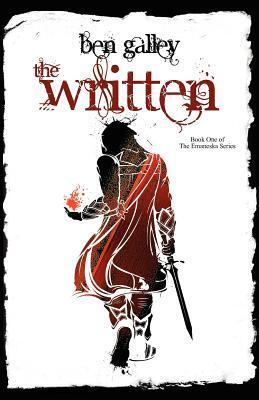Beth Tabler's Blog, page 176
June 30, 2022
#SPFBO8 – Review and Cut – The Trials Of Ashmount by John Palladino
Palladino’s novel, The Trials of Ashmount is a promising start to his fantasy series, and a deliciously brutal, grimdark world.
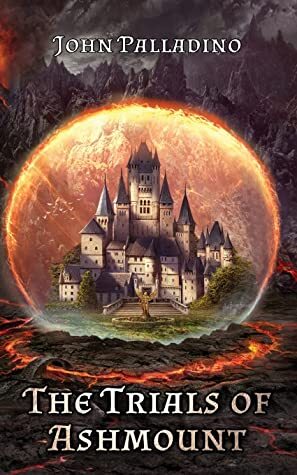 Cedain lies on the brink of war and destruction. In a brutal, unforgiving world, where betrayal, violence, and self-serving politics are an everyday occurrence, five individuals must overcome their own tragedies and weaknesses to survive. And at the centre of all this is Ashmount, the University of Arcanical Arts, which is dedicated to the teaching of the five branches of magic.
Cedain lies on the brink of war and destruction. In a brutal, unforgiving world, where betrayal, violence, and self-serving politics are an everyday occurrence, five individuals must overcome their own tragedies and weaknesses to survive. And at the centre of all this is Ashmount, the University of Arcanical Arts, which is dedicated to the teaching of the five branches of magic.
John Palladino has created a vast and varied world for our characters to inhabit. One of my favourite aspects of the fantasy genre is world-building and Palladino has that in spades. Each of the five main characters each inhabits a different part of Cedain, and the landscapes, peoples, and cultures are wonderfully realised. The idea of the university positioned under an active volcano, surrounded by a powerful magical shield is fantastic, the front cover illustrates this brilliantly. Another aspect of world-building Palladino did very well, were the magic systems. They were well thought out and integrated into the story organically.
What is also apparent after reading through the first few chapters, each chapter a character POV, is that Palladino inhabits the grimdark sub-genre and this is evident as we are introduced to our five main protagonists, Edelbrock, Villic, Sera, Kelden, and Demri. The two standout characters for me were Villic, a nomad warrior who discovers that a magical being lives within him, and Kelden, a young man who travels to Ashmount to see if he has the Trace, the ability to use magic. Both characters had the most engaging story, and their chapters had good pacing and dialogue. Edelbrock’s story, on the other hand, a noble fallen from grace who loses everything he owns and is thrown into a form of gladiator games, felt a little cliché. It’s a trope I have seen done once too often and therefore I didn’t engage with Edelbrock’s storyline as much.
Palladino’s prose, for the most part, is fluid, making for an easy read. On occasion I found his writing a little herky-jerky and found myself having to go over lines again. But where John excels at is dialogue. His sardonic humour, and by extension, his character’s humour, makes for some thoroughly entertaining dialogue. One particularly moustache-twirling character, Scayde Haklon, was an absolute devilish delight to read with some scene stealing moments.
Palladino’s debut novel is a promising start to his fantasy series, and he has created a deliciously brutal, grimdark world, filled with a whole horde of colourful characters. If you are a fan of grimdark fantasy, you will lap this up like a cat to milk. When you read the glossary at the beginning of the book, and it’s titled ‘People Who May Die’ you know you are in for a ride.
Whilst this was an enjoyable, fun read for me, there were a few things I didn’t connect to, so unfortunately this is a cut.
Read The Trials Of AshmountRead Other SPFBO8 Entries#SPFBO8 Review and Cut – The Inquisitor by H.C. Harrington
#SPFBO8 Review and Cut – A Deadly Bloom by Kody Boye
The post #SPFBO8 – Review and Cut – The Trials Of Ashmount by John Palladino appeared first on BEFOREWEGOBLOG.
Review – The Hand that Cast the Bone by H.L. Tinsley
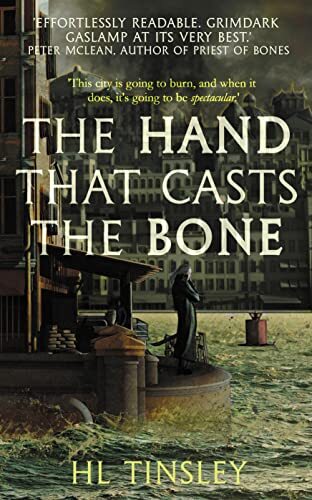 I received an ARC of “The Hand that Casts the Bone” in exchange for an honest review. In addition, I was honoured to be a sensitivity reader for this book.
I received an ARC of “The Hand that Casts the Bone” in exchange for an honest review. In addition, I was honoured to be a sensitivity reader for this book.
Here is my honest review of “The Hand That Casts the Bone”. Thank you again H.L. Tinsley for the privilege of being able to read it.
“That was the thing, when you cast a bone into the dog pit and watch the hounds fight; it wasn’t the strongest dog that won. It was the hand that cast the bone.”
In “The Hand That Casts the Bone”, H.L. Tinsley only builds on her growing reputation for outstanding character development, awesome action sequences, haunting prose, gritty dialogue, and very authentic world-building. Yet, perhaps what is beginning to set Tinsley apart from other great writers the most is her absolutely irresistible opening lines to her books.
The first few lines of “We Men of Ash and Shadow” have become legendary in grimdark fantasy circles as one of the most memorable openings in these types of books. I am sure a lot of Tinsley’s fans were waiting with anticipation to see if Tinsley could deliver another phenomenal opening salvo. Boy did she ever come through in stellar fashion with “The Hand That Casts the Bone”, as you can see from below excerpt:
“There was an indisputably distinct smell to the Hook. Downwind the neighbourhood had the aroma of an old wet dog. Upwind wasn’t much better. Given that the city had been unseasonably warm for weeks, there was no longer anywhere you could escape it. The sun had rendered the area so pungent you could taste the smell, and John Vanguard was only responsible for half of it.”
But Tinsley’s writing is about so much more than great opening lines such as the aforementioned. As hinted in the passage above, Vanguard is back, and still taking on the worst that society has to offer. The former military officer turned mercenary, whose talents include a bit of magic, a lot of brutality, and keeping a handy backpack with sparse contents save the knife he uses to bring justice to those who few will miss by their deaths, returns in the second installment of the series.
Yet Vanguard is even more down on his luck than ever, and for someone who was barely living above vagrancy, that’s saying a lot. No longer with even a bathtub to call home, Vanguard, the killer with a heart of gold, is forced to turn to an old enemy, the ruthless and clever crime boss Mandego, to survive, and recover from wounds sustained in an assassination attempt gone wrong.
The crime lord, who talks to his dead lover’s head, kept in a jar, has his sights set squarely on elbowing the other mob bosses out of the way, and ruling supreme over illicit activities in the region. Mandego sees a way Vanguard can be of use, and trades caring for Vanguard in exchange for the mercenary’s services. So Vanguard swaps working for one tyrannical mob boss – Felix Sanquain, who has now put a price on Vanguard’s head – to work for another in Mandego.
Meanwhile, said Felix Sanquain, the slick, urbane, puppet-master ruler of D’Orsee, is still pulling the strings of everyone in his sphere of influence, and even those beyond it. Sanquain is trying to plant a high level politician in place that will be loyal to him, and serve his agenda, since the politician’s mother and deceased father are indebted to Sanquain financially.
But this move by Sanquain is just part of a much larger plan to propel the cunning and scheming captain to being supreme military leader of the surrounding cities. Moreover, Sanquain still has the relentless and unstoppable killer (and young protegee-turned-foe of Vanguard), noble-born Tarryn Leersac, just barely on a leash, and able to help Sanquain in his plans for domination.
But Tarryn is not someone easily controlled, and he has his own demented, sinister plans. Part of those plans leads him on a crash course with his old mentor, Vanguard. But now the pupil’s talents have exceeded the teacher’s, and things have never looked so bleak for Vanguard’s survival, with, inevitably, a decisive, brutal confrontation against Tarryn looming.
While all of this is occurring, former high society darling, the goodhearted Argent Cooke, is trying to make good on his plan to bring decency and order, oust the despotic crime bosses and secure the city for the people, and the common good. But while Cooke courts his influential cousin Javier to assist him, Cooke’s supporters who include favourite characters from the previous book, like Henriette, Carmen, Kosioc, Demetrio, struggle just to stay alive in the tinder-box that is D’Orsee.
Tensions continue to escalate, as gang wars and the ambitions of men like Mandego and Sanquain threaten to rip a city already in turmoil apart completely. And while Henriette is harbouring a secret that has a definite impact on Vanguard, a woman from Vanguard’s past is returning, that will force the beleaguered mercenary to confront a past more painful than bullets and knife thrusts.
In “The Hand That Casts the Bone”, Tinsley has managed to keep her prose lean, tight, impactful, delicious, without wasting any words, and yet still spin a tale that is as immersive and ambitious as “We Men of Ash and Shadow, though this second book is a good hundred pages longer than the first entry.
You feel like you can rub your fingers together and touch the grime, moral decay, and desperation that oozes off the pages, when you read Tinsley. Grimdark fans will be satiated on the feast of realism and pragmatism that Tinsley brings to fantasy – it is truly well done.
Once again, Tinsley strikes just the right tone and mood, and the tension is revved up high throughout the novel, and maintained even in the quieter, more reflective moments. That brooding, melancholy, and creepy vibe, infused with poignant hope and optimism, redemption, and catharsis, that I found in the first book, carries forward in this book. Along with that vibe, there were some passages of really great dark humor from the witty Tinsley that elicited a few belly laughs from me as I read it.
Be warned though, this book is bleak at times, some of the scenes will tear your heart out, and Tinsley will force you to enjoy every minute of your despair, and angst over the fate of major, and even minor characters. Be prepared for all the trauma, blood-letting, and psychological issues that will surface in the book.
Additionally, Tinsley bravely intensifies her focus on heavy subject matter, such as racism, injustice, and abuse, all spun adroitly within the narrative, making this novel even more poignant than the previous one. She handles all those sensitive issues with aplomb, and keeps the reader invested at all times, evoking strong emotions.
This book reads as quickly as its predecessor, though it’s longer, and I was completely unable to put it down for any length of time – it was so incredible and held me raptly in it’s spell. Few authors can pace a book so effectively. You’ll want to stop and re-read, in admiration of Tinsley’s lovely writing, but you won’t be able to at the first go – you’ll just want to compulsively keep reading to see what happens next.
The jewel of reading Tinsley, and this series, is still Vanguard, the emotional wreck on the inside who always seems in control on the outside. Vanguard’s innate humanity and integrity, despite some of the horrible things he has done, are clearly evident.
As I said in my review of “We Men of Ash and Shadow”, Vanguard should ultimately go down as one of Grimdark fiction’s great protagonists, right up there with Jorg Ancarth and Sand an Glokta. There are heaps of dirt and foulness on the surface of the man, but underneath there’s plenty of shine, and the complexity of the character is only becoming more fascinating, as more reveals about him come out as the series moves forward.
After reading “We Men of Ash and Shadow” I stated Tinsley had established herself, very quickly out of the gate, as grimdark royalty. “The Hand That Casts the Bone” only solidifies this position, for me, and I don’t see Tinsley surrendering her crown anytime soon.
Five plus stars easily for “The Hand That Casts the Bone”! A simply terrific read!
Read The Hand that Casts the BoneReview – Ex-Heroes by Peter Clines
Review of WHERE LOYALTIES LIE by Rob J. Hayes
The post Review – The Hand that Cast the Bone by H.L. Tinsley appeared first on BEFOREWEGOBLOG.
June 29, 2022
Cover Reveal – The Alchemy of Sorrow
“Here be dragons and sorcery, time travel and sorrow.”
Book Description:
Here be dragons and sorcery, time travel and sorrow.
Vicious garden gnomes. A grounded phoenix rider. A new mother consumed with vengeance. A dying god. Soul magic.
These stories wrestle with the experience of loss—of loved ones, of relationships, of a sense of self, of health—and forge a path to hope as characters fight their way forward.
From bestsellers and SPFBO finalists to rising voices, 13 exceptionally talented authors explore the many facets of grief and healing through the lens of fantasy and sci-fi.
About the cover illustration:For the cover of The Alchemy of Sorrow, we wanted to create an image that was evocative of all the stories contained within its pages, without being specific to any single one of them.
Since most of our stories have female protagonists, we chose to center the image on a grieving woman. We wanted her to be a woman of color, to celebrate the diversity of our stories and authors, and to represent the majority of the world’s population. We asked the artist to portray her standing among ruins, with her grief transmuting into light, which in turn begins to transform her surroundings.
We also took inspiration from the Japanese practice of kintsugi – in which a fractured piece of pottery is restored using precious metals mixed into the lacquer so that the item’s cracks become a beautiful feature of the piece rather than a flaw to be hidden away – and we asked if the woman’s skin could feature cracks lined with gold.
After receiving Zoe’s gorgeous artwork, the task then went to Virginia to design a text layout that didn’t detract from it. She did her best to convey all the information necessary and make it legible without obscuring too much of the artwork.
From those sketchy details, Zoe Badini conceived of this stunning image of a woman standing before a broken stained-glass window, with light coming from the cracks in her skin. The light forms swallows, a symbol of rebirth, and renews the dying jasmine around her.
Featuring the following authors! M.L. Wang, K.S. Villoso, Intisar Khanani, Sonya M. Black, Angela Boord, Levi Jacobs, Krystle Matar, Virginia McClain, Quenby Olson, Carol A. Park, Madolyn Rogers, Rachel Emma Shaw & Clayton Snyder M.L. Wang, K.S. Villoso, Intisar Khanani, Sonya M. Black, Angela Boord, Levi Jacobs, Krystle Matar, Virginia McClain, Quenby Olson, Carol A. Park, Madolyn Rogers, Rachel Emma Shaw & Clayton Snyder M.L. Wang, K.S. Villoso, Intisar Khanani, Sonya M. Black, Angela Boord, Levi Jacobs, Krystle Matar, Virginia McClain, Quenby Olson, Carol A. Park, Madolyn Rogers, Rachel Emma Shaw & Clayton Snyder M.L. Wang, K.S. Villoso, Intisar Khanani, Sonya M. Black, Angela Boord, Levi Jacobs, Krystle Matar, Virginia McClain, Quenby Olson, Carol A. Park, Madolyn Rogers, Rachel Emma Shaw & Clayton Snyder M.L. Wang, K.S. Villoso, Intisar Khanani, Sonya M. Black, Angela Boord, Levi Jacobs, Krystle Matar, Virginia McClain, Quenby Olson, Carol A. Park, Madolyn Rogers, Rachel Emma Shaw & Clayton Snyder M.L. Wang, K.S. Villoso, Intisar Khanani, Sonya M. Black, Angela Boord, Levi Jacobs, Krystle Matar, Virginia McClain, Quenby Olson, Carol A. Park, Madolyn Rogers, Rachel Emma Shaw & Clayton Snyder


Pre-order link for ebooks:
https://books2read.com/AoS
Pre-order link for audiobooks:
https://books2read.com/AoS (currently not available for pre-order in audio but it will be in the next few months)
Print pre-orders coming soon!
The post Cover Reveal – The Alchemy of Sorrow appeared first on BEFOREWEGOBLOG.
#SPFBO8 – Review and Cut – Debunked by Dito Abbott
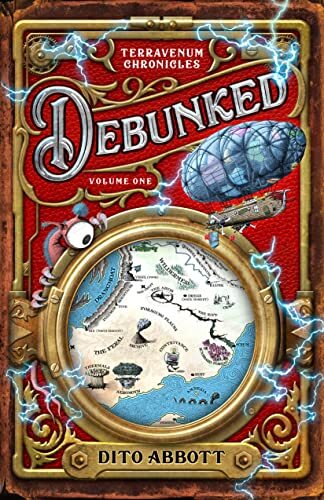 What it’s about:
What it’s about:Sometimes adventure knocks. Other times, it kicks the door in.
“Dearest Alexandria and Ozymandias,
If you are reading this, I have perished. My demise likely involved some manner of spiked pit or curiously fanged beast, so it’s doubtful I suffered long. Do not try to find me—the path is too perilous, and I am lost to the mortal plane.”
When Alex and Ozzie read their grandfather’s latest “death” letter, they barely blink. Dying six times in two years has to be a record, even for an explorer as incompetent as Sir Quidby Forsythe III.
Faster than you can say “kidnapped by a giant, glowing lizard,” the Forsythe twins are dragged into a world of ancient prophecies, sarcastic swords of legend, mutant slime beasts, and a growing awareness their grandfather might be the greatest explorer in history.
With Skhaar the Annihilator hot on their trail, Ozzie and Alex must solve the mystery of Sir Quidby’s disappearance before they become the final victims of the Forsythe Curse.
My Thoughts
 It’s safe to say that DEBUNKED by Dito Abbot gets off to a strong start. If I had to make a comparison, it would be like if Douglas Adams wrote YA characters instead of Arthur Dent. We open with a letter from Ozzie’s grandfather, Sir Quidby. “I bequeath to you my travel journey,” the letter says. “Do NOT open it (but when you inevitably ignore my wishes and plumb its depths, remember; mystery and danger are jealous companions—you cannot flirt with one without courting the other).” And of course, chaos almost immediately ensues.
It’s safe to say that DEBUNKED by Dito Abbot gets off to a strong start. If I had to make a comparison, it would be like if Douglas Adams wrote YA characters instead of Arthur Dent. We open with a letter from Ozzie’s grandfather, Sir Quidby. “I bequeath to you my travel journey,” the letter says. “Do NOT open it (but when you inevitably ignore my wishes and plumb its depths, remember; mystery and danger are jealous companions—you cannot flirt with one without courting the other).” And of course, chaos almost immediately ensues.
I very much enjoy the humour of Abbot’s work. It’s very tongue-in-cheek, very self-aware, never overly clever, nor crass or uncomfortable. Humour is such a moving target from person to person, but most of the lines that I’ve highlighted were ones that made me laugh literally out loud, and I applaud that accomplishment!
Ozzie and his sister Alex are cleverly realized. Ozzie is quiet and a little bit awkward. Alex is our intrepid adventurer. Their sibling energy is on point throughout.
Mrs. Willowsby is a standout favourite. I loved this fierce maternal warrior, who seemed to live “undercover” as Sir Quidby’s housekeeper.
When Sir Quidby’s funeral is rather rudely interrupted by (as yet) unknown villains, Ozzie and Alex find themselves swept away into a world they didn’t know existed—and they team up with characters who are looking for Sir Quidby. The technology that Ozzie and Alex encounter is in turns interesting and hilarious. The Babel fish analogy was appropriately horrifying but useful.
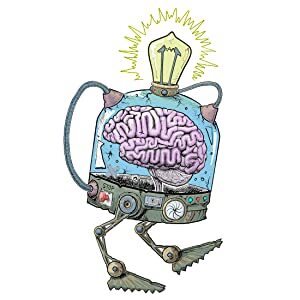 It’s in the aforementioned chaos that DEBUNKED begins to lose me a bit. I found the action hard to track, and we need to learn a lot about the in-world technology and species in order to keep up. This is a valid method of storytelling—I’m sure Ozzie and Alex felt pretty overwhelmed in their new reality!—but it’s something that I always struggle with. I found myself having to reread passages to figure out what I’d missed. And while the book was still very funny, I didn’t always know what I was laughing about.
It’s in the aforementioned chaos that DEBUNKED begins to lose me a bit. I found the action hard to track, and we need to learn a lot about the in-world technology and species in order to keep up. This is a valid method of storytelling—I’m sure Ozzie and Alex felt pretty overwhelmed in their new reality!—but it’s something that I always struggle with. I found myself having to reread passages to figure out what I’d missed. And while the book was still very funny, I didn’t always know what I was laughing about.
What I liked about Ozzie and Alex also, in some ways, added to the struggle. While I liked that they were both rather level headed as far as YA protagonists goes, this also meant that the story was being driven mostly by another character, Pascal, an inventor who also knew Sir Quidby. Pascal is anything but level headed. He’s impulsive, irreverent, and the questionable success of his inventions often pushes the chaos along. Having him drive the story might have been better served if he was given a POV through the book. As it was, I found that at times the chapters were so focused on what Pascal was doing that I would forget whether I was reading Ozzie’s or Alex’s POV, which made it harder for me to keep track of what, exactly, was happening. I will absolutely acknowledge that this is my preference as a reader showing, and not necessarily a criticism of Abbot’s style. It’s just a mismatch of Abbot’s execution against my taste.
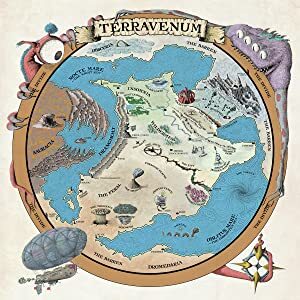 Added to this, whenever I try to think of comps for this book, they’re all sci-fi. The talk about technology, the airships, the electricity as a weapon. There’s some mention of dynami, which might be the in-world term for magic, and yes there is a sword, but it’s an overall vibe that shelves this book in sci-fi in my brain, especially with the strong Hitchhiker’s Guide influence. This, in of itself, is not a problem. However, this contest is for fantasy, so I begin to wonder if DEBUNKED might be a better fit for our sister contest, SFSPC. (Mr. Abbot, if you’re reading this, keep an eye on that contest. Maybe when they’re open for submissions, you could offer up DEBUNKED if you’re brave enough to take a second swing.)
Added to this, whenever I try to think of comps for this book, they’re all sci-fi. The talk about technology, the airships, the electricity as a weapon. There’s some mention of dynami, which might be the in-world term for magic, and yes there is a sword, but it’s an overall vibe that shelves this book in sci-fi in my brain, especially with the strong Hitchhiker’s Guide influence. This, in of itself, is not a problem. However, this contest is for fantasy, so I begin to wonder if DEBUNKED might be a better fit for our sister contest, SFSPC. (Mr. Abbot, if you’re reading this, keep an eye on that contest. Maybe when they’re open for submissions, you could offer up DEBUNKED if you’re brave enough to take a second swing.)
All in all, if you like your books to be hectic, hilarious without being crass, and heavily influenced by Douglas Adams, I urge you to pick up DEBUNKED. It’s well polished and a lot of fun.
This is, however, a cut for SPFBO.
I hope it’s some consolation to the author that I bought a physical copy for my daughter. She’s a lot smarter than me and she’s already enjoying it a lot!
Read DebunkedAdditional #SPFBO8 Posts To Check Out#SPFBO8 Review and Cut – A Deadly Bloom by Kody Boye
#SPFBO8 Review and Cut – Empire Under a Dying Sun by Joseph O. Doran
The post #SPFBO8 – Review and Cut – Debunked by Dito Abbott appeared first on BEFOREWEGOBLOG.
June 28, 2022
Six Elementals Interview – E.G. Radcliff
 Six Elementals Author Interviews will introduce prospective readers to some of the best writers in their genre you may, or may not, have heard of, via a series of six questions. I encourage you to check out the work of these phenomenal creatives! Links to their websites and purchase links will always appear, accompanying the interview. Check them out!
Six Elementals Author Interviews will introduce prospective readers to some of the best writers in their genre you may, or may not, have heard of, via a series of six questions. I encourage you to check out the work of these phenomenal creatives! Links to their websites and purchase links will always appear, accompanying the interview. Check them out!
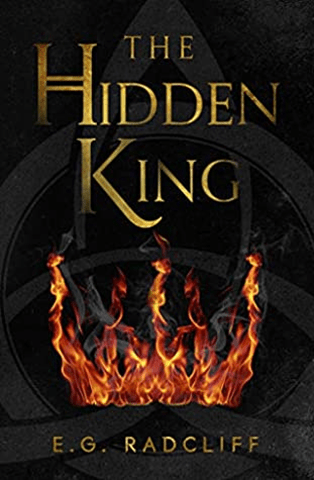 This is a distinct pleasure, in that I have the award-winning YA fantasy author, joining me: the amazing E.G. Radcliff! Her currently published novels include: The Hidden King, The Last Prince, and The Wild Court.
This is a distinct pleasure, in that I have the award-winning YA fantasy author, joining me: the amazing E.G. Radcliff! Her currently published novels include: The Hidden King, The Last Prince, and The Wild Court.
P.L.: E.G., thanks so much for joining Six Elementals Interviews! I am one of your super-fans, as you know, so this is very special for me! The Hidden King was one of my top ten books read in 2021! And I’m not alone, obviously, in my love for your debut novel. The first book in your The Coming of Áed series has racked up quite the literary prizes, including being an SPFBO SemiFinalist in 2020, a Book Bloggers’ Novel of the Year (BBNYA) SemiFinalist in 2020 & 2021, a BlueInk Notable Book, an International Review of Books Gold Seal Book, and a Kindle Book Award SemiFinalist in 2021. Congratulations on all the well-deserved accolades! It takes a lot of courage for a writer just to put their work out there and publish, much less enter awards. What do you feel is the value of submitting for, and potentially winning literary awards? How do you feel that the process, or the winning of the awards themselves, has helped your writing career, and your personal growth?
E.G.: Thank you! I do feel that there are benefits to submitting for awards. The most obvious are the immediate emotional ones; being offered an award feels like proof that all your hard work has paid off. There are, of course, plenty of other ways to get that kind of validation, but it’s a very potent feeling. The second benefit is more practical. Some of this recognition has allowed me to reach a broader audience than I otherwise would have (like the audiences of Publishers Weekly and Booklist magazines). It’s also a great way to encourage readers to take a chance on your book, since a book with an award tends to stand apart from the crowd.
P.L.: Well, having read your work, I can definitely attest it stands out! By now, many people in the Indie Fantasy community know all about your wonderful books, but for those who don’t can you please tell us what The Coming of Áedseries is all about?
E.G.: The Coming of Áed is an action-packed YA series inspired by Irish folklore, blending magic, found family, and some intense self-discovery. A young man must discover who—and also what—he is… and there are consequences.
P.L.: Oh yes, lots of delicious consequences! Do you write full time? If so, can you please tell us about being a full-time novelist (something many of us aspire to be)? If not, can you disclose a little about your other work, or hobbies and interests outside of writing?
E.G.: As much as writing full-time sounds nice on paper, I don’t think I could ever do it. I love writing above just about all else, but I’m not sure I was built to stay put for so long. My job is at a library, but I am also engaged in my community (I play water polo and sing in a choir, for example). I draw, play the lute rather badly (I’m getting better!), and keep lists. The last one sounds odd, and it is, but it’s my version of collecting stamps–I have lists of idioms, lists of mushrooms, lists of proverbs and sayings, lists of quotes from friends, lists of things I’ve seen out the windows of trains… I have lists of lists.
P.L.: Sounds like you are multi-talented! And great you have all those interests! Can you please speak a little bit about your writing journey? How long have you been writing, what inspired you to write, and what made you elect to self-publish, instead of small presses or querying, trying to obtain an agent, and going for a “Big Five” traditional house?
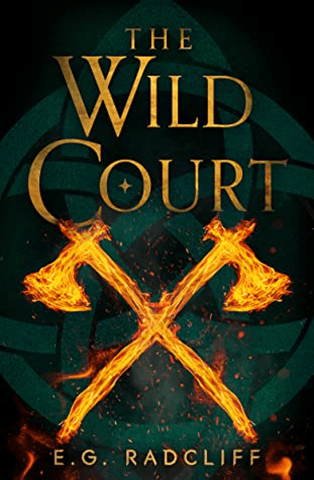 E.G.:
I’m not sure when I decided that I wanted to be an author. I’ve loved storytelling for as long as I can remember; I told tales before I could hold a pen, and when I learned to read and write, it was like learning how to walk. I tripped a lot, but it felt natural. Truthfully, I can’t remember when I started writing for pleasure. It was always something I’d just done, but I didn’t realize it could be more than a pastime until around the time that I hit my late-teens. In the past, I hadn’t put much thought into the mostly-instinctive act of writing, and so the pleasure I reaped didn’t last beyond the end of the writing process. That changed when I started trying longer pieces, pieces where I experimented with new skills and played around with more difficult techniques, because I created results I could re-read and be proud of. I love the challenge that comes with that, and I love the anticipation I feel when I’m building up to an exciting plot point. Writing is the one activity where I lose all track of time; I’ll look up at two in the morning and realize that I should have gone to bed ten pages earlier. I just can’t get enough.
E.G.:
I’m not sure when I decided that I wanted to be an author. I’ve loved storytelling for as long as I can remember; I told tales before I could hold a pen, and when I learned to read and write, it was like learning how to walk. I tripped a lot, but it felt natural. Truthfully, I can’t remember when I started writing for pleasure. It was always something I’d just done, but I didn’t realize it could be more than a pastime until around the time that I hit my late-teens. In the past, I hadn’t put much thought into the mostly-instinctive act of writing, and so the pleasure I reaped didn’t last beyond the end of the writing process. That changed when I started trying longer pieces, pieces where I experimented with new skills and played around with more difficult techniques, because I created results I could re-read and be proud of. I love the challenge that comes with that, and I love the anticipation I feel when I’m building up to an exciting plot point. Writing is the one activity where I lose all track of time; I’ll look up at two in the morning and realize that I should have gone to bed ten pages earlier. I just can’t get enough.
For me, independent publishing was the way to go, for a variety of reasons. It allowed me to function on my own schedule, arrange my own promotions, and market the way I chose. But I wanted to make sure I produced a piece that was as high-quality as any book that had been through the works at a “big-5” publishing house, so I spent a long time with editors and artists to ensure that it was up to snuff.
P.L.: Your books are definitely of top quality, and wow, your covers are glorious!!! What do you think is more difficult to write, and garner larger reading audiences? Great standalones or great series? Will you write both?
E.G.: It’s probably easier to draw attention to a series, since every new release is a reminder about the books before it, and the sales accumulate over time. It’s harder to maintain consistent reader attention about a standalone unless you already have a committed following. I gravitate toward series myself, since I have little interest in writing 1,000-page novels like Steven King, and would prefer to divide a story into sections; besides, the idea that each book in a series still needs to have its own compelling arc is a lovely challenge. It isn’t as simple as dividing a long story into multiple parts, and I like that.
P.L.: Personally I LOVE series, but am really learning to appreciate stand-alones more and more, especially as companion novels to compliment series. Can you tell us a little bit about how magic works in your series, what you can reveal without spoilers? Would you consider it hard or soft magic?
E.G.: I had so much fun putting together the magic system for The Coming of Áed. At first, it was a challenge, since I started writing before I planned a single thing, and the system started to take shape before I’d actually settled on any rules. It got to a point very quickly where I needed to codify it, or else the system would be too soft to hold up under artistic scrutiny, and so I sat down and arranged everything into a pattern I could consistently follow going forward. I’m really happy with the result.
In The Coming of Áed, there is a veil that divides the world.
On one side of the veil, the human realm—everything feels familiar and concrete. On the other side, the otherworld—is the home of fae, who probably think it’s familiar and concrete, but nobody asked them.
Like anything else in the natural world, the veil operates on a cycle. It’s at its most impenetrable during the steady seasons of summer and winter, and it is most vulnerable at times of flux like autumn and spring. That means that two times every year, it becomes thin enough to allow the passage of creatures from one side to another. These openings are marked by celebration and tradition: the Festival of Fire in the spring, and the Festival of Souls in the autumn. Once the veil closes again, nothing can pass through until the next festival—with some exceptions.
The veil is natural, and thus imperfect. Here and there, little tears open and heal, and they usually shift so rapidly that nothing could possibly find them, much less pass through. On occasion, though, one will stabilize. Natural tears are invariably small, much too small for anything larger than a field mouse or a will-o-wisp, and by and large, they stay undetected.
This is helped by the fact that they most often form in naturally liminal spaces, like cave passages, places where water moves underground, or deep-forest mushroom circles. If, however, one happens to find a tear, it is possible to widen it enough to allow passage—meaning, someone needs to die on that spot. Death of a thinking mind constitutes the irrevocable movement from one state to another, and that interacts with the veil in a very specific way: if a human dies in the tear, the resulting gateway will enable passage into the human realm, and if a faerie or other sentient fae creature dies in it, it will enable passage in the other direction. Once made, these gateways are stable.
Magic originates on the fae side of the veil. It occurs in many states: certain minerals, for example, carry connective magic that links all rocks in a deposit, certain small animals employ magic camouflage to protect them from predation, and some plants acquire magical properties under certain conditions and are thus used in the making of medicine. Magic can even occur at larger scales, such that my water horse, for instance, wields power over whatever body of water it calls home and can even command vessels on its surface.
The most potent magic, however, is fae.
Faeries live according to a natural duality: there are two kinds of fae magic, and two kinds of fae. Low fae and high fae tend to live separately, with low fae organized into discrete, diverse courts while high fae have historically been united under a single monarch. No matter low or high, all fae have two very unique realms of power: the first is the ability to summon fire. It is this ability which illustrates the most glaring difference between high and low-court fae. Low fae have fire which resembles a natural wood fire, typically orange or red in color, and like natural fire, it causes no harm to other fae. High fae, on the other hand, possess brilliant white flames which burn hot enough to injure low-court fae. This fire can also be cast into shapes, usually weapons, so long as the wielder doesn’t let go of it.
The second type of magic, more hauntingly, is power over the mind. Most often, this presents as little more than the ability to sense emotion very acutely, but a combination of natural talent and active cultivation can elevate this to terrifying levels: skilled faeries have the ability to create emotion in another. This can be as simple as extending one’s own emotions onto the recipient, or as involved as inciting madness so specific as to induce specific hallucinations. This is often perceived as illusion magic.
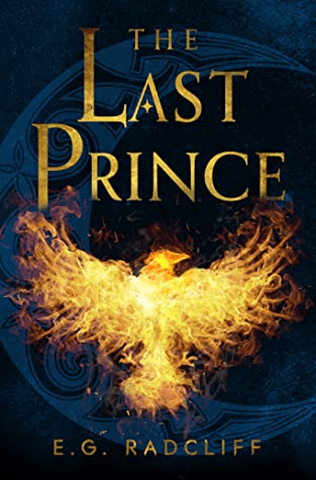 Humans, while not naturally magical, are not excluded from practicing the more mysterious arts. Magic tends to emanate from those objects and creatures which produce it, and the imperfect barrier of the veil permits a small degree of this untethered magic to cross into the human realm. It is this diffuse power that humans can bend to their will. Given that it is not interwoven with their own being, they have much more freedom in how they use it, even if it is far less powerful than it would be if it were inborn.
Humans, while not naturally magical, are not excluded from practicing the more mysterious arts. Magic tends to emanate from those objects and creatures which produce it, and the imperfect barrier of the veil permits a small degree of this untethered magic to cross into the human realm. It is this diffuse power that humans can bend to their will. Given that it is not interwoven with their own being, they have much more freedom in how they use it, even if it is far less powerful than it would be if it were inborn.
Humans use a number of methods to channel magic to their purposes. The most common is the verbal spell: a combination of nonsense syllables which by their shape and sound help the concentration of the caster to flow into the shape which the magic will follow, achieving the desired end. Physical movements–dances, patterns of hand gestures, holding very specific positions–can achieve the same effects. This is not dissimilar to meditation, and talented casters can often forgo the guidelines of a spell.
In order to master magic safely, most human magic-users begin learning as children. Children tend to be able to command less magic at once, meaning that the power that is misdirected when a spell goes wrong can do much less damage.
Culturally, magic and its practitioners are regarded with distrust, but its occasional usefulness cannot be denied.
This is the magic system that underpins all the action in The Coming of Áed—experienced at its peak in The Wild Court.
P.L.: I’m so looking forward to reading the rest of your series, including The Wild Court! E.G., this has been amazing! It has been such an honour to have you join me on Six Elementals Interviews! Thank you so much for interviewing with me!
The interview Originally Appears here

Twitter: @EgRadcliff
Goodreads: https://www.goodreads.com/author/show/19274226.E_G_Radcliff
Instagram: https://www.instagram.com/egradcliff
Website: http://www.egradcliff.com
Check Out Other InterviewsSIX ELEMENTALS AUTHOR INTERVIEW – STEPHEN ARYAN
The post Six Elementals Interview – E.G. Radcliff appeared first on BEFOREWEGOBLOG.
Review of RIVER OF THIEVES by Clayton Snyder
 For my final #Grimdarkmasters read of April 2022 (the month where I dedicate most of my TBR to reading the works of four of the top Indie grimdark writers) I read “River of Thieves” (Thieves’ Lyric Book One) by Clayton Snyder.
For my final #Grimdarkmasters read of April 2022 (the month where I dedicate most of my TBR to reading the works of four of the top Indie grimdark writers) I read “River of Thieves” (Thieves’ Lyric Book One) by Clayton Snyder.
This book was a Self-Published Fantasy Blog-Off SPFBO Semi-Finalist in 2019, and Snyder himself is one of the most decorated grimdark authors out there. He’s a three-time SPFBO Semifinalist, an SPFBO 7 Finalist, a WSFA (World’s Small Press) & 2-time Stabby Nominee, a Booknest Longlist & Grimmy Award Winner.
Still, even knowing what an illustrious writer Synder was, and having previously read some of his work, I was caught wholly unprepared for what I read in “River of Thieves”. It was mind-boggling, and truly I struggled to write this review, because it’s hard to review a book like this one. But I mean all this only in a good way.
The main plot is the simple part. It’s about two thieves, Cord and Nenn. Larcenous funny-guy with a heart of gold underneath, Cord has a nasty habit of not staying dead after every heist, where invariably he gets into trouble and ends up, of course, being killed. These resurrections appear to be wearing more and more on him, as nastier creatures emerge from his mouth post-demise, and he’s getting more tired of dealing with dying over and over again, period.
Nenn is Cord’s deadly, knife-wielding, brooding, intense but witty and sharp-tongued companion who gets to narrate a large part of the tale first-person. She is, against her better judgement, always getting talked into going along with Cord’s hair-brained ideas. But she too is worried about the affects constantly dying and coming back is having on her friend. So when Cord suggests one last big job (you know these always go horribly wrong) to set them up for retirement, Nenn – daydreaming of settling down with a nice woman or man one day, and living peacefully in a nice home, removed from thieving and mayhem – reluctantly goes along.
Collectively, this group loves to cuss, loves to hump regardless of gender or which side good or bad their bedding partner is on, loves to stab, and are fiercely loyal to one another. They rack up the body count, and leave a trail of havoc wherever they go, but their fearless approach to facing their own doom, laughing all the way, and the way they bind together like a very dysfunctional family is admirable, and will have the reader rooting for them.
Cord recruits two other sidekicks to join him and Nenn. One is a frenemy, a massive, hulking man named Rek, who can crush skulls with one hand, but happens to have a soft spot for kittens. The other is a beautiful, mysterious witch with some daunting powers named Lux who Nenn gets all hot and bothered about.
The foursome follow Cord’s plan which looks like a suicide mission, to infiltrate the realm of King Anaxos Mane, a notorious tyrant, with lots of human and inhuman protection.
Sounds like a classic fantasy heist tale? Think again dear readers, nothing typical about this book.
Parts of the book had me dazed and confused, as we dive headlong into a world of magic-wielders, gods, spirits, undead, more. While the main plot and main point of view is very straightforward and linear, there are a few additional POVs thrown in later in the book that give some momentary vertigo, but once you get through them the reader will likely see how much more enriching the story becomes for them.
The characters are exceptional. It’s not a big cast, and it allows the reader to really connect with the four main thieves. The relationships are filled with sarcasm, animosity, and derision layered on top of deep bonds of friendship, and it makes for a truly poignant and entertaining read. In particular, I loved the dynamic between Rek and Cord, even though the Cord-Nenn partnership is at the heart of the narrative.
The villains (that is the ones who are not the main characters) are quite nasty, and the Harrowers in particular are detestable. And I truly HATED Rook. The gods are capricious (which I love) and you can sense the humans are really just pawns in their schemes, despite the gods professing their affection for certain characters. The worldbuiding, exposition, and prose is sneakily fantastic. Snyder can really write well, and I had to go back and re-read some of his eloquent descriptions of landscapes and settings because I realized I was missing out on some great stuff that might have otherwise gotten lost in the black humour and action pieces. Synder’s prose can be very beautiful, even lyrical, at times, and it is never dull, always ironic and sharp.
From Orlect, to Midian, to the open water, the settings were gloriously depicted, and felt real. Engines propelled by hearts that have been ripped out of chests, zombies, ghouls, and other macabre features of the book are really neat and inventive that will delight dark fantasy fans.
There are some truly gut-punching moments in the book, and please don’t expect happy endings here. Though the conclusion is somewhat definitive, and are more installments, don’t expect a pleasing and neatly-wrapped up resolution to this book. As a matter of fact expect to have your heart broken a few times, and for some things to be left rather ambiguous.
In saying all this, the book was funny as hell. If there’s one thing that the reader will quickly find out about Snyder is that he has a wicked sense of humour, and can really bring the satire.
In this book, the complete paragraphs of banter are just as good as the quick and deadly one-liners. We as readers get to indulge in that little juvenile that lurks within all of us that says “you just have to laugh at this because it is freaking funny” warring with the adult that is saying “you shouldn’t be laughing at this, it’s juvenile” (stifles a laugh) and the juvenile always wins. But there is a LOT more than adolescent humour going on here – most of the humour is very adult, dark, and viciously, outrageously hilarious. I had to stop reading several times because I was howling, laughing nearly to tears, or just appalled at myself at the fact that I was laughing in the first place.
There is an abundance of pop culture references, innuendo about current world politics, and even nods to famous books and authors such as Scott Lynch’s Gentleman Bastards series. None of it felt out of place, and only enhanced my reading experience, and that is a credit to Synder in the way it was done, because usually this sort of stuff I find somewhat distracting in a fantasy book. But that’s my particular taste issue, not anything an author does wrong by going there.
Synder tackles some compelling themes in the book, including religion, and apathy towards it, as seen through Nenn’s disdain:
“I’m not much for religion, never really was. It’s hard to believe in any deity that says ‘This is your life. You can’t improve it, but if you worship me, I can make it not worse. That’s not patronage, it’s blackmail. It’s a protection racket. I’d seen a million of them, growing up in the streets and the alleys. I could respect the hustle, but not the sentiment.”
I need to pay homage here to the tale within a tale in the book (a feature I adore in fantasy), the story of the Goblin King. This was phenomenal: I recommend the reader slow down and pay attention to this one when it appears.
I cannot conclude a review of this book without mentioning some of the chapter titles. These days one rarely finds chapter titles anymore in books, however…here are some of them in “River of Thieves”: Bandit Lettuce Tomato, This Asshole Again, That’s a Filthy Joke You Dickhead, Storytime for Wayward Rogues, Party Crashing and Insurrection for Fun and Profit, Pirates are Just Thieves with More Syphilis and perhaps my favourite – Cat Shit and Violence. Do I need to say more?
Finally, to state the obvious, this book is truly dark. Don’t read it if you are not ready for that. I found Qoth’s tale interspersed throughout the narrative was particularly bleak and gruesome, but as noted above, very valuable into learning more about the overall story and character motivations. Like most grimdark books – and remember I consider Snyder a grimdark master – prepare to be surprised, horrified, creeped out, and be given lots to ponder after you finish the book.
Crude, rude, funny as hell, gory, bizarre, ultimately brilliant, “River of Thieves” goes into my consideration for my top books I read so far in 2022, and the twisted genius that is Clayton Synder has not disappointed me yet. I plan to read everything this very talented writer writes.
Read River of ThievesThe post Review of RIVER OF THIEVES by Clayton Snyder appeared first on BEFOREWEGOBLOG.
June 27, 2022
Review of THE WRITTEN by Ben Galley
Farden. Farden is one of the brightest stars, one of the most feared mages and fierce fighters, and the most seasoned and heralded veterans among all the mages.
Ben Galley needs no introduction. Arguably, only a handful of other self-published fantasy authors have the combination of name-recognition among readers, influence in the Indie fantasy scene, and acclaim that Galley enjoys.
Galley’s books have racked up awards such us Booknest Fantasy Awards, Library Journal Book of the Year, and numerous Self-Published Fantasy Blog- Off (SPFBO) semi-final and finals placements. A self-publishing consultant, he’s also been a guest speaker in prestigious locations such as the London School of Economics. Galley is considered an influencer in the indie fantasy sphere, has published more than 13 books to-date, and is highly successful. But every illustrious writing career begins with one book, and for Galley that book was The Written, Book One of the Emaneska Series.
I always like to read the first book ever written by established authors, even if I have heard their later works are a vast improvement, as is typical as writers grow and evolve. In this case in the month of April 2022, I was dedicated to reading four of the most lauded Indie grimdark writers, Galley being one of them. Thus, April 2022 became my #Grimdarkmasters reading month. So, due to all this, I read Galley’s first book, The Written, last month.
While his debut novel, the talent of Galley is plainly on display in The Written, and I can see why this book launched Galley’s current fame, assuming he has improved his writing since this first entry.
The Written begins as a bit of a murder mystery. A powerful mage from the land of Arka, whose identity is unknown, is summoned by five scholars who have uncovered something extremely dangerous in a powerful spell book. This is no uncommon danger, but an existential threat to humankind. But the mage, incomprehensibly, brutally slays the scholars, and steals the book.
Enter our protagonist, Farden. Farden is one of the brightest stars, one of the most feared mages and fierce fighters, and most seasoned and heralded veterans among all the mages. The mages in the book are an ancient order of warrior / magicians, who have spell books inked on their backs in the form of elaborate tattoos (amazing concept). Farden is tasked to find out what happened to the book, and who slew the scholars.
His journey takes him across the lands of Emaneska, where he encounters daunting magical adversaries, conspiracies, attempts to overcome ancient prejudices and hostilities to form alliances for the good of the world, and faces unseen betrayals and double-crossing. While he is by nature a bit of a loner, Farden needs the assistance of trusted long-time allies, and new, more shaky alliances, and his own formidable skills, to survive, and attempt to stop those who would risk destroying the world, to serve their own lust for power.
I found Farden to be a very interesting character, and a good lead for the book. We get several other POVs, in smaller snippets, but Farden is the focus of the narrative. The mage is at moments recalcitrant, impulsive, brash, and is moody, mercurial, and also somewhat introverted and brooding. Yet he is very much dutiful, loyal to his friends, and courageous to a fault. He can also show humility, along with some pettiness at moments, that made him a very believable person.
There were some great secondary characters, but Farfallen the old dragon was definitely my favourite, with the vampyre Durnus and Svarta the Siren Queen also stand-outs.
Galley richly populates his Emaneska world – seemingly loosely based on our own world, with Albion standing in for Britain, for example – with every manner of beloved fantasy creatures from our favourite tropes. Wyrms, dragons, vampyres, lycans, and more (storm giants???!!!) appear on the pages of The Written, which will delight many a fantasy fan. The worldbuilding feels rich, including the magical school of the mages in the Arkan capital of Arfell.
On a special note, I mentioned: dragons. Many of us love them, and we want to see them well-done and Galley does an exceptional job here, and with all the supernatural creatures in the story. They all have their own unique feel, culture, idiosyncrasies, customs.
The fight scenes are plenty furious, breathtaking, and the magical element added to these combat sequences really made for some thrilling reading. With a very intricate and hard magic system, where the reader will develop an excellent understanding of how magic is wielded, its consequences, who has more magical power than who, and what is a talisman rather than what or who can independently use magic without needing a conduit.
In terms of the themes, I can see now where the genesis of Galley into truly dark fantasy began. For example, the school for the Written is no cake-walk, but a brutal, unforgiving trial, where many young aspirants don’t survive. The Arkmage / Undermage politics I found very compelling and ruthless, and that was awesome, as I love me some great political intrigue. And I particularly found the lycan story to be very dark, emotive, and I felt sorry for him, and wanted to know even more about him.
Here I must comment on and give credit to Galley for his fabulous prose. I was enamoured of it from the book’s lovely opening lines:
“It was snowing outside. The white flakes drifted lazily in the chill night breeze, dusting the rocky mountainside with an ivory blanket. Ice crystals flurried and spun, dancing through the cold night air, skittering along the windowsill. By all rights, it was a foul night for Arfell.”
The Written is an invigorating, very well-written, character-driven epic fantasy, and checks all the boxes in terms of being epic in scope, filled with magic, creatures, heroes, sword fights, betrayals, murder, and intrigue. This is yet another example of a book where the tropes are done so well, it does not matter a hoot that there are tropes.
The ending of the book was fantastic and surprising, and I am all in for continuing the Emaneska series.
4.5 stars for “The Written”!
Review – Bloodrush by Ben Galley
Review of Ben Galley’s Chasing Graves
Read The Written
ASSISTANT EDITOR AND AUTHOR P.L. STUART

I’m an experienced writer, in that I’ve been writing stories all my life, yet never thought to publish them. I’ve written informally – short stories – to entertain friends and family, for community newspapers, volunteer organization magazines, and of course formal papers for University. Now, later in life, I’ve published what I believe is a great fantasy novel, and definitely worth reading, called A Drowned Kingdom. My target audience is those who enjoy “high fantasy”. A Drowned Kingdom is not “dark fantasy”. It’s written in a more idealized and grandiose style that I hope isn’t too preachy, and not too grim. Still, I’m hoping my book has appeal to those who don’t typically read this type of work – those who don’t read fantasy of any kind – because of the “every-person” themes permeating the novel: dysfunctional familial relationships, extramarital temptation, racism, misogyny, catastrophic loss, religion, crisis of faith, elitism, self-confidence, PTSD, and more.
Many of these themes I have either personal experience with, or have friends or family who have dealt with such issues. I’ve had a long professional law enforcement career, undergone traumatic events, yet been buoyed by family, faith, and positivity. I’m a racialized middle-aged man. I’ve seen a lot of life. Ultimately I want the planned series, of which A Drowned Kingdom will be the introduction, to be one of hope, and overcoming obstacles to succeed, which I believe is my story as well. My protagonist, Othrun, will undergo a journey where he’ll evolve, change, and shape a continent. He’s not always likeable. He’s a snob, bigot, is vain, yet struggles with confidence. He’s patriarchal. Overall, he’s flawed. But even ordinary flawed people can change. We’re all redeemable.
Ordinary people can make a difference, not just fictional Princes. I want that message to shine through my work.
WHERE TO FIND HIMTwitter – @plstuartwrites
Facebook – @plstuartwrites
The post Review of THE WRITTEN by Ben Galley appeared first on BEFOREWEGOBLOG.
#SPFBO8 Review and Cut – The Inquisitor by H.C. Harrington
 The Inquisitor is well-paced, Nestor’s inner turmoil and intellectual mind making him an engaging protagonist and the murder mystery will have any Agatha Christie or whodunit fan lapping it up.
The Inquisitor is well-paced, Nestor’s inner turmoil and intellectual mind making him an engaging protagonist and the murder mystery will have any Agatha Christie or whodunit fan lapping it up.
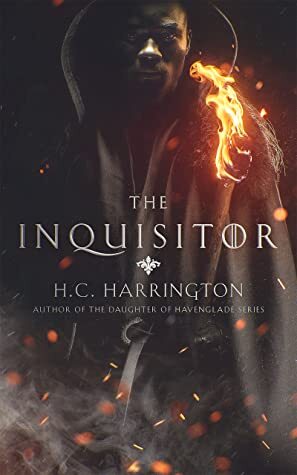 What is it About?
What is it About?A brutal murder, a disgraced inquisitor, and a city of secrets.
From the Amazon best-selling author of Daughter of Havenglade comes, The Inquisitor.
In the port city of Pax Grati, a highborn daughter betrothed to the son of a powerful lord has been brutally murdered.
Nestor Atius, left to rot in the dungeons has one chance to find the killer and bring justice to her family and the realm.
But when an unlikely friend reveals the investigation is more than meets the eye, Nestor must make a choice.
As he uncovers the truth, it becomes more and more clear, he is the killer’s next target.
A fantasy mystery from the Havenglade World.
My ThoughtsNestor used to be an Inquisitor, a priest belonging to the Order of the Scroll and a man of great reputation and integrity. But now he is a fallen man and imprisoned for betraying the code of celibacy of the order and falling in love with a woman who now haunts his thoughts. But Nestor is given a chance of redemption, absolution, and freedom. He must use his skills and mind as an Inquisitor to solve the murder of Lady Jillis, the eldest daughter of Lord Tibius Kopp. The catch? He only has five days to do this. Battling with racial prejudice and many suspects all with something to hide, he must contend with the challenge ahead as well as his inner turmoil.
This was the first SPFBO book I chose. The story sounded intriguing, a murder mystery in a fantasy setting with a damaged man fighting his demons really caught my attention. I think the premise and all the elements included make for a potentially fantastic story and, for the most part, it is.
First, I really enjoyed the character of Nestor, our protagonist. H. C. Harrington clearly defines his character, particularly his intellect and attention to detail, traits that are vital to his job as an Inquisitor. He is a foreigner in the lands that the story is set in. He is a man of darker skin, and as such, he is subject to xenophobia and racism, which makes his job more difficult. Harrington integrates this well into the investigation; people are untrusting of Nestor, and unwilling to open up, which creates tension throughout effectively, though at times, I would have liked to have explored this a little deeper. But for the purposes of the plot, it worked well enough.
Harrington’s world-building was good, it had as much depth as it needed to have. Because I usually read epic fantasy or long series, I personally found the world-building a bit too surface level, but for anyone who prefers plot and character over world building you will get along with this just fine.
The murder mystery itself is well thought out. Nestor’s logic and attention to detail makes for some excellent scenes in deduction and using evidence to propose a hypothesis. The questioning of suspects and people who knew Lady Jillis have a police procedural feel about them that I really enjoyed, rather like you get in detective TV shows like CSI. Though at times, I did feel some of the interrogation scenes fell into cliché. For example, Nestor often likes to slam his fist down on the table to make a point and intimidate. Also a few good cop, bad cop type scenarios which took me out of the story just a touch, but I did find myself invested in the questioning and enjoyed picking holes in potential murder suspects’ alibis.
The prose is simple and straightforward, lending itself to a quick and fun read. The Inquisitor is well-paced, Nestor’s inner turmoil and intellectual mind making him an engaging protagonist and the murder mystery will have any Agatha Christie or whodunit fan lapping in up. Unfortunately for me, despite enjoying this book, this is a cut.
Read The Inquisitor#SPFBO8 Review and Cut: House of Bastiion by K.L. Kolarich
The post #SPFBO8 Review and Cut – The Inquisitor by H.C. Harrington appeared first on BEFOREWEGOBLOG.
#Musicmonday Mickey by Toni Basil

image
Today’s kick-ass song is…
drum roll..
The earworm that is Mickey by Toni Basil
Lyrics to Mickey
Oh Mickey, you’re so fine
You’re so fine, you blow my mind
Hey Mickey, hey Mickey
Oh Mickey, you’re so fine
You’re so fine, you blow my mind
Hey Mickey, hey Mickey
Oh Mickey, you’re so fine
You’re so fine, you blow my mind
Hey Mickey, hey Mickey
Oh Mickey, you’re so fine
You’re so fine, you blow my mind
Hey Mickey
Hey Mickey
You’ve been around all night and that’s a little long
You think you’ve got the right but I think you’ve got it wrong
Why can’t you say goodnight?
So you can take me home, Mickey
‘Cause when you say you will, it always means you won’t
You’re givin’ me the chills, baby, please baby don’t
Every night you still leave me all alone, Mickey
Oh Mickey, what a pity, you don’t understand
You take me by the heart when you take me by the hand
Oh Mickey, you’re so pretty, can’t you understand?
It’s guys like you, Mickey
Ooh what you do Mickey, do Mickey
Don’t break my heart, Mickey
Hey Mickey
Now when you take me by the, who’s ever gonna know
Every time you move, I let a little more show
There’s something you can use, so don’t say no, Mickey
So come on and give it to me anyway you can
Anyway you want to do it, I’ll take it like a man
Oh please baby, please don’t leave me in this jam Mickey
Oh Mickey, what a pity, you don’t understand
You take me by the heart when you take me by the hand
Oh Mickey, you’re so pretty, can’t you understand?
It’s guys like you, Mickey
Ooh what you do Mickey, do Mickey
Don’t break my heart, Mickey
Oh Mickey, you’re so fine
You’re so fine, you blow my mind
Hey Mickey, hey Mickey
Oh Mickey, you’re so fine
You’re so fine, you blow my mind
Hey Mickey, hey Mickey
Oh Mickey, you’re so fine
You’re so fine, you blow my mind
Hey Mickey, hey Mickey
Oh Mickey, you’re so fine
You’re so fine, you blow my mind
Hey Mickey
Oh Mickey, what a pity, you don’t understand
You take me by the heart when you take me by the hand
Oh Mickey, you’re so pretty, can’t you understand?
It’s guys like you, Mickey
Ooh what you do Mickey, do Mickey
Don’t break my heart, Mickey
Oh Mickey, what a pity, you don’t understand
You take me by the heart when you take me by the hand
Oh Mickey, you’re so pretty, can’t you understand?
It’s guys like you, Mickey
Ooh what you do Mickey, do Mickey
Don’t break my heart, Mickey
Oh Mickey, what a pity, you don’t understand
You take me by the heart when you take me by the hand
Oh Mickey, you’re so pretty, can’t you understand?
It’s guys like you, Mickey
Ooh what you do Mickey, do Mickey
Don’t break my heart, Mickey
Oh Mickey, what a pity, you don’t understand
You take me by the heart when you take me by the hand
Oh Mickey, you’re so pretty, can’t you understand?
It’s guys like you, Mickey
Ooh what you do Mickey, do Mickey
Don’t break my heart, Mickey
Do not lie, you know you want to bounce around now. It is impossible not to.
#MusicMonday Diva Dance from the Fifth Element
#musicmonday Gogol Bordello Start Wearing Purple
The post #Musicmonday Mickey by Toni Basil appeared first on BEFOREWEGOBLOG.
June 26, 2022
Review – Blame! Volume 1 by Tsutomu Nihei
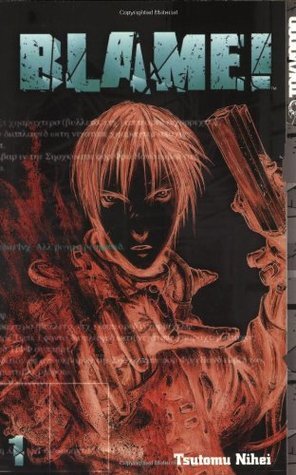
Image courtesy of Goodreads.com
What it is About?In a future world rife with decay and destruction, Killy is a man of few words who packs one very powerful gun. He wanders an endless labyrinth of cyberdungeons filled with concrete and steel, fighting off cyborgs and other bizarre silicate creatures. Everyone is searching for the Net Terminal Genes, but no one is quite certain what kind of power they contain. The answer may lie hidden among the scattered human settlements of this vast and desolate future world.
My ThoughtsI am flummoxed. I very much wanted to like this book. I feel like it would increase my “cool” factor exponentially if I did, but alas I was confused. As a reader, I don’t have a whole lot of experience with Manga as a genre. I have dabbled in it but never went swimming. That being said, I have quite a bit of experience in reading the cyber punk genre which is one of my favorites. Manga absolutely excels in it. “Ghost in the Shell,” and “Akira” are bonafide classics, and rightly so.
 But “Blame!” just didn’t do it for me. I can appreciate the quality of the artwork and the simplicity of the dialog: the dialog is minimalistic and it relies on the stark visuals to convey meaning and tone. But, I think it reached too far into starkness and loses any sort of context for the story. I got lost repeatedly and the characters ended up meaning nothing to me. Any die-hard manga fan should check out this novel but the average reader trying to branch out would be well served to check out “Akira” or “Ghost in the shell”.
But “Blame!” just didn’t do it for me. I can appreciate the quality of the artwork and the simplicity of the dialog: the dialog is minimalistic and it relies on the stark visuals to convey meaning and tone. But, I think it reached too far into starkness and loses any sort of context for the story. I got lost repeatedly and the characters ended up meaning nothing to me. Any die-hard manga fan should check out this novel but the average reader trying to branch out would be well served to check out “Akira” or “Ghost in the shell”.
The post Review – Blame! Volume 1 by Tsutomu Nihei appeared first on BEFOREWEGOBLOG.

